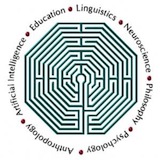Home
Canterbury, UK, 2-6 July 2012

Diagrams is an international interdisciplinary conference series, covering all aspects of research on the theory and application of diagrams. In 2012 it was held at the University of Kent which overlooks the historic city of Canterbury in the UK.
Diagrams is the only conference series that provides a united forum for all areas that are concerned with the study of diagrams, including architecture, art, artificial intelligence, cartography, cognitive science, computer science, education, graphic design, history of science, human-computer interaction, linguistics, logic, mathematics, philosophy, psychology, and software modelling. The conference attracts a large number of researchers from these related fields, positioning Diagrams as a major international event in interdisciplinary research.
The conference proceedings were be published as Springer Lecture Notes in Computer Science (LNCS) volume 7352.
Diagrams 2012 solicited long papers, short papers and posters. All submissions were peer reviewed. See the program for titles and authors of the accepted submissions.
- Long Papers - submitted: 54, accepted: 16.
- Short Papers - submitted: 17, accepted: 6 (some long paper submissions were accepted as short papers).
- Posters - submitted: 12, accepted: 21 (some long and short paper submissions were accepted as posters).
The headline figure is a long paper acceptance rate of 29.63%.
Best Paper Award
Barbara Tversky, James E. Corter, Lixiu Yu, David L. Mason and Jeffrey V. Nickerson: "Representing Category and Continuum: Visualizing Thought"
Best Student Paper Award (sponsored by the Cognitive Science Society)
Richard Burns, Sandra Carberry, Stephanie Elzer and Daniel Chester: "Automatically Recognizing Intended Messages in Grouped Bar Charts"
Three satellite workshops took place alongside Diagrams 2012:
- July 2: The 3rd International Workshop on Euler Diagrams organised by Peter Chapman and Luana Micallef.
- July 2: Technology-Enhanced Diagrams Research organised by Richard Cox and Jonathan San Diego.
- July 6: Accessible Graphics: Diagrams for Vision Impaired People organised by Cagatay Goncu and and Kim Marriott.
A tutorial was held during Diagrams 2012:
Conference subjects include, but are not limited to:
- applications of diagrams
- computational models of reasoning with, and interpretation of, diagrams
- design of diagrammatic notations
- diagram understanding by humans or machines
- diagram aesthetics and layout
- educational uses of diagrams
- evaluation of diagrammatic notations
- graphical communication
- heterogeneous notations involving diagrams
- history of diagrammatic notations
- information visualization using diagrams
- psychological issues pertaining to perception, comprehension or production of diagrams
- software to support the use of diagrams
- theoretical aspects of diagrams including, for example, classification and formalization
- usability and human-computer interaction issues concerning diagrams
Important Dates:
Conference 2-6 July 2012
Diagrams 2012 is financially supported by:




